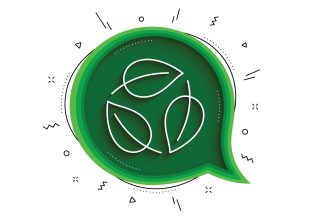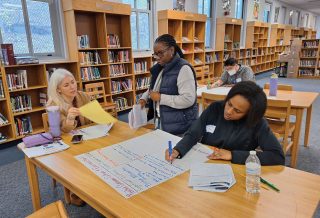IDEAS
Plan, but be prepared to pivot
By Jody Spiro
Categories: Collaboration, Fundamentals, Leadership, Learning communities, School leadership, System leadershipAugust 2022
The last couple of years have brought unprecedented challenges to us all, especially to the dedicated educators who lead and teach our children. For all educators, change has been constant and the issues to address are many, including student health and safety (physical, emotional, and mental), educator well-being and burnout, shifting policies and politics, and community relations. To address them effectively, schools should adopt this mantra: Plan, but be prepared to pivot.
In unpredictable times, building intentional flexibility is important — but so is having foundational goals and strategic plans because you need a starting point and an initial path. Although it might seem paradoxical, it is important to think through the goals and strategies several steps in advance and also be prepared to pivot as circumstances change.
Part of this process of adapting is reflecting on the lessons we are learning from change. Amid the stress, loss, and grief for students and staff, there has also been progress and much learning about how to lead through such difficult and ambiguous times.
This learning has been evident in a learning community of leaders from 78 large and medium school districts across the U.S. that has been meeting monthly throughout the pandemic. About 120 district leaders and 100 school leaders have been coming together to discuss supporting current school leaders (principals, assistant principals, and principal supervisors) and planning for the bench of future leaders.
They have voluntarily met for the past two years to learn together, share, and brainstorm approaches to common difficult problems in real time. Each year, they have taken stock collectively about what they were learning from this — including initial learning after one year that was revisited the next. Among the questions the community has been addressing are: Can we learn lessons from these difficult years to leapfrog us forward? Can we keep what has worked and incorporate that into our new normal?
This article summarizes lessons and examples from this learning community that other educators might apply to their work as they continue to navigate difficult and ambiguous times. Although no one would want to be in the position we have been in these last couple of years — and still are — we can use this opportunity to reassess what we want to get done and how this circumstance might help us do even better than we were previously.
78 school districts from across the U.S. have learned lessons from the pandemic that we can all apply to accelerate learning going forward. @WallaceFdn #TheLearningPro Share on XAfter two years, our learning community members have identified three main learnings, each of which has its roots in what experts in the discipline of change management would advise (Spiro, 2018):
- Keep what has worked in the past combined with what has worked well these last two years;
- Pursue and celebrate early wins, both big and small; and
- Communicate early and often.
Keep what has worked in the past combined with what has worked well these last two years.
Participating leaders told us that they are staying focused on their goals but making necessary changes. For example, one said, “The way we do things may have changed, but our beliefs and values have not. We are still 100% committed to our mission.” Another said, “Our North Star is always student achievement [but] now balanced with the emotional well-being of staff.”
There is a great comfort and strength in following that North Star and knowing it is unchanging. This has underpinned all strategies used by our learning community members. With this assurance of purpose and direction, there comes freedom to use this moment to break the mold of “this is how we have always done this.” As one of the leaders in our learning community said, “We have taken the opportunity to concentrate on what is most important and what is extraneous.”
Some of the activities districts added required creating new structures, but most have kept the existing structures with a twist necessitated by the pandemic, such as turning in-person meetings into virtual ones. Now the challenge is to think through what former or adapted structures should be kept and which new structures should remain. For example, many districts have learned that meetings can be more frequent and less disruptive when they are virtual, but find that certain meetings are more effective or appropriate to hold in person. It takes thoughtful consideration to decide what works best for each situation.
Examples of things that district leaders say they intend to keep in the new normal include:
- Coaching teachers in classroom visits. Such activities might seem optional given the urgency of pandemic protocols, but, in fact, they have become more important. In many districts, for example, principal supervisors support and coach principals with one-on-one sessions at least once a week.
- Mentoring new teachers and leaders. Even though these sessions may have become virtual, it has been important to keep them going for real-time support and development, especially given growing staff vacancies and the need for many new teachers and leaders.
- Internships for aspiring teachers and leaders to prepare them for their next positions and ensure they are ready on day one so their students benefit.
- Developing relationships with community partners. Districts and schools should not be trying to do everything themselves. Partnerships are key to a thriving community of learning for students. As one leader said, “Getting our partners to take action has been transformative.”
Pursue and celebrate early wins, big and small.
Pursuing an early or quick win is an important strategy to inspire confidence and move forward to achieve larger and longer-term goals. Early wins are tangible and observable, achievable, perceived as having more benefits than costs, symbolic of a desired shared value, publicized and celebrated, used to build momentum, and nonthreatening to those who oppose the strategy (Spiro, 2012).
Setting a short-term, observable strategy that is seen by all as important for advancing their shared values helps set momentum and inspire confidence. It is important that early wins are a commitment that produce results and data — and that they are accomplished within the time frame and publicized when that happens.
Many of the districts in our learning community engaged in strategies designed to achieve early wins to help set a path forward during the pandemic and as schools returned to in-person learning. Here are a few examples of what they did.
Professional learning. Many districts used professional learning and study groups to help teachers navigate the pandemic and develop their skills in a timely way. A frequent refrain we hear from teachers and leaders is that little or nothing in their past work prepared them for the situations in which they now find themselves. Professional learning goes a long way to address those needs and also to make visible concrete and observable achievements. These investments in professional learning showed teachers that leaders still valued adult learning, cared about staff needs, and could maintain a normal routine.
Some of the leaders in our group recognized that they had made a mistake by initially suspending professional learning at the beginning of the pandemic, thinking that teachers and leaders would appreciate the dispensation from nonclassroom responsibilities. In fact, this delivered a detrimental message, suggesting that leaders did not value people’s learning. Through dialogue with their colleagues, they came to understand that keeping the professional development was important and brought it back.
Tools and protocols. To demonstrate the continued commitment to student achievement, leaders have found it useful to develop and use observation protocols for such activities as classroom visits and coaching, professional learning communities, and faculty meetings. Part of achieving this early win was providing opportunities for educators to share their experiences using these tools. This furthered the conversation and led to the revision of protocols that are still in place.
Partnerships with local community organizations. Meeting with local community partners, seeking and incorporating their input and feedback, and calling on their on-the-ground perspectives and expertise has helped districts serve their students. Whether it is churches that support families, nonprofits that provide after-school programs, the business community that leads fundraising, or other local organizations that can provide assistance in getting the word out to parents, partnerships are crucial.
Several districts are calling on local organizations to help them further their goals around equity — for example, by recruiting diverse people into the education profession. One district reported an early win when attendance at a meeting with members of a local organization jumped to 200, thanks to the district’s committed engagement attempts, compared to 30 participants prepandemic. That concrete early win is building momentum in that it is visible that more people are involved — a symbolic indication of better inclusion. Of course, they must now capitalize on this.
Streamlined administrative procedures. Another ripe area for early wins is reducing administrative burden on teachers and leaders. Small changes can make a big difference in staff perceptions of how things are improving. For example, one district stopped sending numerous emails to principals each day and, instead, consolidated all nonurgent messages into a single email each Friday. Principals appreciated having their inboxes uncluttered so they could attend to those messages of most importance.
Standards for principals and principal supervisors. Since leader standards are a focal point in many districts, developing revised standards that reflect the new reality and aspirations is important. Revised standards can provide timely and helpful guidance and lead to other early wins, such as professional leaning and coaching that were cited earlier.
New student programs such as pre-K, individual tutoring, or after-school programs. As districts develop and implement new programs for students to support emerging needs, those should be heralded as wins. Districts should show how these programs are linked with the goals referenced earlier to aid student achievement and well-being and communicate that they are not just another siloed program.
Of course, you can’t only stay with early or quick wins. You need to capitalize on the momentum to create longer-term strategies. But starting small with achievable outcomes is a great way to get going. Recognizing these — and all — wins is important. Don’t forget the celebrations, which are good for momentum and morale, but often skipped over. As one participant put it, “We should not lose sight of the small and big wins that serve as momentum for our work.”
Communicate early and often.
Our learning community leaders have found that communication, transparency, and sharing the “why” for decisions are key components to success. They say they have learned the value of transparency and discovered new ways to achieve it. One participant said, “It’s not that we weren’t communicating before, but now we’re using all different approaches such as embracing social media. We’ve also done work with the principals to help them communicate with parents and communities.”
Some of the effective strategies leaders have reported include increased communications over multiple platforms; having a dedicated hotline for parents; posting on Instagram for students; hosting town hall meetings; and providing frequent updates internally and externally. Leaders plan to continue many of these strategies. As one said, “Communication was the key throughout the pandemic and continues to be the main area of focus today.”
‘We can do this’
As one of our learning community participants put it, “The work in the current circumstances is challenging and well worth the effort. … Doing this requires courage, intentionality, and focus. We can do this, but need a plan, evaluation, and feedback to make it happen.”
In the pursuit of accelerating learning for all students, while also being mindful of students’ and adults’ well-being, the leadership skill of most urgency is the ability to plan and be prepared to pivot. If we can learn from the heroic job educators have done these past two years and use that knowledge to continue what’s working and learn how to adapt, we can accelerate our vision for excellent and equitable education for all students as we move forward.
Download pdf here.
Reflections from leaders
“The pandemic has taught us what we are capable of doing and that our commitment to serving our students and communities allows us to do the impossible.”
“We need to be innovative and creative in finding ways to keep our focus on setting high expectations for student achievement moving forward while taking care of all of the people who play a large role in educating our students.”
References
Spiro, J. (2018). Leading change handbook: Concepts and tools. The Wallace Foundation.
Spiro, J. (2012). Winning strategy. JSD, 33(2), 10-16. learningforward.org/journal/implementation-2/winning-strategy/

Jody Spiro (jodyspiro50@gmail.com) is a professor and author in education leadership and systems change and a senior advisor to Learning Forward.
Categories: Collaboration, Fundamentals, Leadership, Learning communities, School leadership, System leadership
Recent Issues
BUILDING BRIDGES
December 2024
Students benefit when educators bridge the continuum of professional...
CURRICULUM-BASED PROFESSIONAL LEARNING
October 2024
High-quality curriculum requires skilled educators to put it into...
LEARNING TO PIVOT
August 2024
Sometimes new information and situations call for major change. This issue...
GLOBAL PERSPECTIVES
June 2024
What does professional learning look like around the world? This issue...












